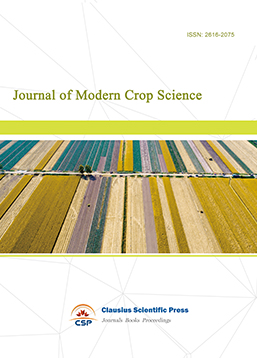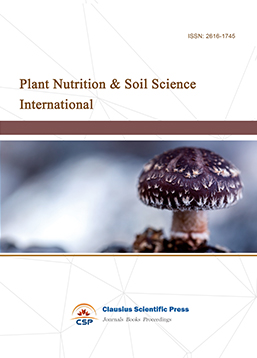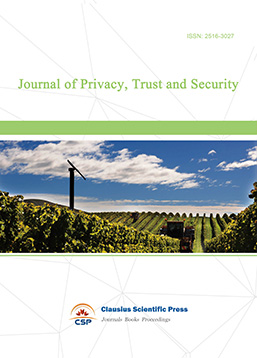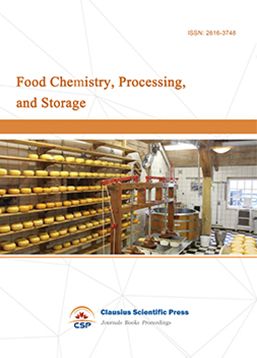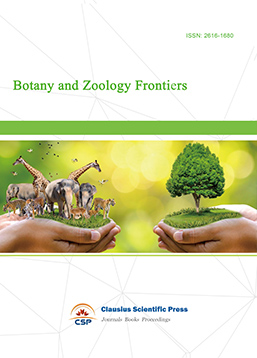Classification Technology of GC-MS Map Data of Baijiu Based on Sparse Principal Components
DOI: 10.23977/afshn.2023.050107 | Downloads: 21 | Views: 1282
Author(s)
Zhiwen Yang 1
Affiliation(s)
1 Artificial Intelligence Key Laboratory of Sichuan Province, Sichuan University of Science & Engineering, Yibin, 644000, China
Corresponding Author
Zhiwen YangABSTRACT
In order to achieve accurate identification of GC-MS Baijiu mapping data, the sparse principal component analysis (SPCA) of GC-MS Baijiu mapping data is achieved by introducing the elastic net penalty function and ridge regression to restrict the sparse principal components on the basis of the principal component analysis method. The sparse principal components are fed into different classifiers for classification and identification, and a Baijiu quality classification model is established. Through comparison experiments, it was demonstrated that sparse principal components better represented the information of different characteristics of liquor, and the classification recognition accuracy after classification was higher, and the recognition rates of SPCA+KNN, SPCA+DT, SPCA+SVM, and SPCA+BP reached 62%, 89%, 97% and 100%; the differences of sparse principal components of GC-MS profiles of different grades of liquor were greater than the differences of principal components, and the sparse principal components of GC-MS profiles of liquor was a nonlinear relationship. The established sparse principal component-based Baijiu quality evaluation model can effectively realize the evaluation of Baijiu grades, which provides a more effective and objective method for the control of Baijiu quality and grade identification.
KEYWORDS
Baijiu recognition; sparse principal component analysis; GC-MS map; elastic net penaltyCITE THIS PAPER
Zhiwen Yang, Classification Technology of GC-MS Map Data of Baijiu Based on Sparse Principal Components. Advances in Food Science and Human Nutrition (2023) Vol.5: 52-59. DOI: http://dx.doi.org/10.23977/afshn.2023.050107.
REFERENCES
[1] Jian Li, Jiang Xue. Study on the identification method of Luzhou flavor pure grain Baijiu. Chinese Brewing, 2015, 34 (1): 118-121.
[2] Xiuli Chen, Hairong Gao, Zhenxu Huang, et al. Application of Electronic nose analysis method in Baijiu classification and recognition. Journal of Xinyang Normal University (Natural Science Edition), 2014,27 (3): 386-389393
[3] Ting Tian, Shuyi Qiu, Lingji Wen, et al. Differentiation and identification of different rounds of Maotai flavor Baijiu by Electronic nose technology. China brewing, 2017, 36(10):71-75.
[4] Xiaolei Zhang, Jing Rao, Chunyang Li. Application of gas chromatography and gas chromatography-mass spectrometry in quality control of Baijiu. Brewing Technology, 2016, 43(2):16-23.
[5] Zhancheng Xu, Yong Chen, Shuang Wang. Study on the Flavor Quality Characteristics of Chinese Famous Wine Jiannanchun by Using Two Dimensional Gas Chromatography and Adsorption Stirring Extraction Technology. Brewing Technology, 2012, 39(5):6-8.
[6] Ruiyu Xu, Zhuowei Zhu, Yangjun Hu, et al. Identification of several Luzhou flavor Baijiu by three-dimensional fluorescence spectroscopy combined with PCA-SVM. Spectroscopy and Spectral Analysis, 2016, 36(4): 1021-1026.
[7] Jianlei Yang, Tuo Zhu, Yan Xu, et al. Application of 3D fluorescence spectroscopy based on least squares support vector machine algorithm in the classification of Chinese Baijiu. Spectroscopy and Spectral Analysis, 2010, 30(1):243-246.
[8] Xinfeng Li, Liang Zhang, Fangfang Li, et al. Evaluation of Luzhou flavor Baijiu quality grade based on GC-QTOF MS technology. Science and Technology of Food Industry, 2019, 40(15):235-241.
[9] Qi Zhang, Yong Xu, CaiHong Shen, et al. Research progress in analysis of volatile flavor components of Luzhou flavor Baijiu. Brewing Technology, 2017(12):98-104.
[10] Siying Xun, Rui Dong, Qinrong Peng, et al. Determination of Volatile Phenols in Maotai flavor Baijiu by High-performance liquid chromatography. Food Science, 2012, 33(24):239-243.
[11] Altinel B, Ganiz M C. A new hybrid semi-supervised algorithm for text classification with class based semantics. Knowledge Based Systems, 2016, 108(C): 50-52.
[12] Xu Hu, Jinsong Li, Yongqing Tang, et al. Classification of Luzhou flavor Baijiu based on GC-MS and Chemometrics. Food and fermentation industry, 2021, 47(8):212-217.
[13] Liu Fang, Kangzhuo Yang, Jianmin Zhang, et al. Classification of Luzhou flavor Baijiu based on Electronic nose and GC-MS. Food and fermentation industry, 2020,46(2):73-78.
[14] Haiyan Wang, Hu Wang, Guoxiang Wang, et al. Classification of Baijiu flavor types based on Compressed sensing. Computer program, 2015, 41(3):172-176,181.
[15] Zhengping Hu, Junling Chen. Multi layer fusion deep local PCA subspace sparse optimization feature extraction model. Journal of Electronics, 2017, 45(10):2383-2389.
| Downloads: | 2590 |
|---|---|
| Visits: | 90164 |

 Download as PDF
Download as PDF